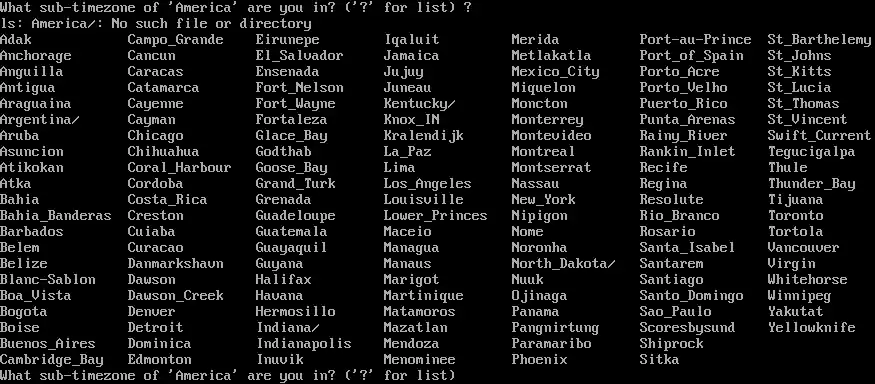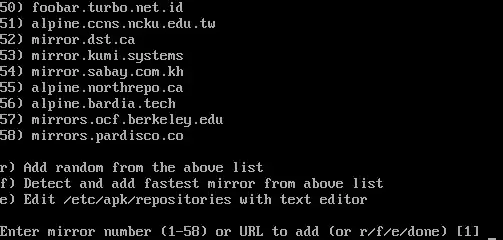Alpine newbie installation
This page will attempt to walk you through four installation scenarios:
- A regular single boot Alpine Linux installation
- (not currently available) A single boot Alpine Linux installation with a custom partition layout
- (not currently available) A dualboot installation with Windows
- (not currently available) A dualboot installation with MacOS
This wiki page in a work in progess |
Prerequisites:
- Download the iso file from https://alpinelinux.org/downloads
- Write this iso to a USB drive using software like: Rufus, balenaEtcher, Ventoy, Burning the iso to a CD is also a option but using a CD may slow down the installation process,
- Note: writing the iso to a USB drive or CD is unnecessary if your installing AlpineLinux in a virtual machine
- If your using a UEFI system secure boot needs to be disabled
Single boot Alpine Linux installation
After boot up, you will see a command line shell (the default shell is ash)
Login as root
Log in as root and press enter. No password will be asked for if you're running from the live environment,

Running setup alpine script
Run the setup-alpine script as shown in the image:

Select keyboard layout
Choose your keyboard layout. If your using a US (QWERTY) keyboard choose us. Typically, for a Latin American environment, es is enough. For Russian (and maybe Cyrilic) ru is sufficient.

Select keyboard variant
Choose your keyboard variant. If you don't know your keyboard variant you will need to figure that out, for US (QWERTY) keyboards choose us,

Enter system hostname
Host name, which will be the name of your computer. using the default localhost is fine, but you can input a custom hostname if you want,
![]()
Initialize network cards
Choose your network card. Typically, you can just go with the default (press enter),
![]()
The second question will ask you whether or not to use dhcp for your IP Address, unless you have a reason to choose none choose dhcp
![]()
The third question will ask you whether or not you would like to do maunal network configuration, if you dont need to or it can wait until after installation choose n, if you need to do manual network configuration now choose y and it will open /etc/interfaces in vi
![]()
Initialize network DNS
The DNS should be automatically detected (you shouldnt see this), if not, you will be asked ask for the server addresses. Type "" (empty string) for domain, then press enter. Later you can change it to the DNS server address of your choice as shown in the picture. Press enter to go to the next question:
![]()
Changing the root password
Next a root password must be defined. You'll need to type it twice for confirmation as the picture shows. If it's too short you will get a warning, but your password will still work. Just retype it and go.

Timezone
Select a timezone, the default is UTC, type ? if you need help choosing a different timezone,

Choosing a sub-timezone (this may not be required depending on which timezone you choose):

Proxy
Then setup script will ask for a proxy, if you want to use a proxy input the needed information now, if not leave it as the default (none)
![]()
Mirrors
Then setup script will ask for repository mirror chooser.. it will default to [1], you can manually choose a mirror, choose one of the options or choose the default, if your unsure just leave it as default, this can be changed after installation if needed.

SSH Server
Installing an SSH server enables you to manage your machine remotely. OpenSSH is what the big distros use. Dropbear is a tiny SSH replacement. Its recommended to type none if you dont intend to use SSH,

NTP client
This is for time sync. Press enter to use the image offline. It can be changed after installation.

Partitioning and installation
First choose your disk
![]()
Now choose your installation mode, this page will only cover crypt and sys
if you would like encryption type crypt, if not continue with the next step (if you choose crypt also proceed with the next step)
Now type sys
![]()
setup-alpine will now ask you for the last time to confirm that you want to erase the disk and continue, if your sure type y, if not type n
![]()
If you choose crypt you will be asked for a password to encryption the partition(s)
Now alpine will install to your disk, wait for it to finish then reboot when it has completed.